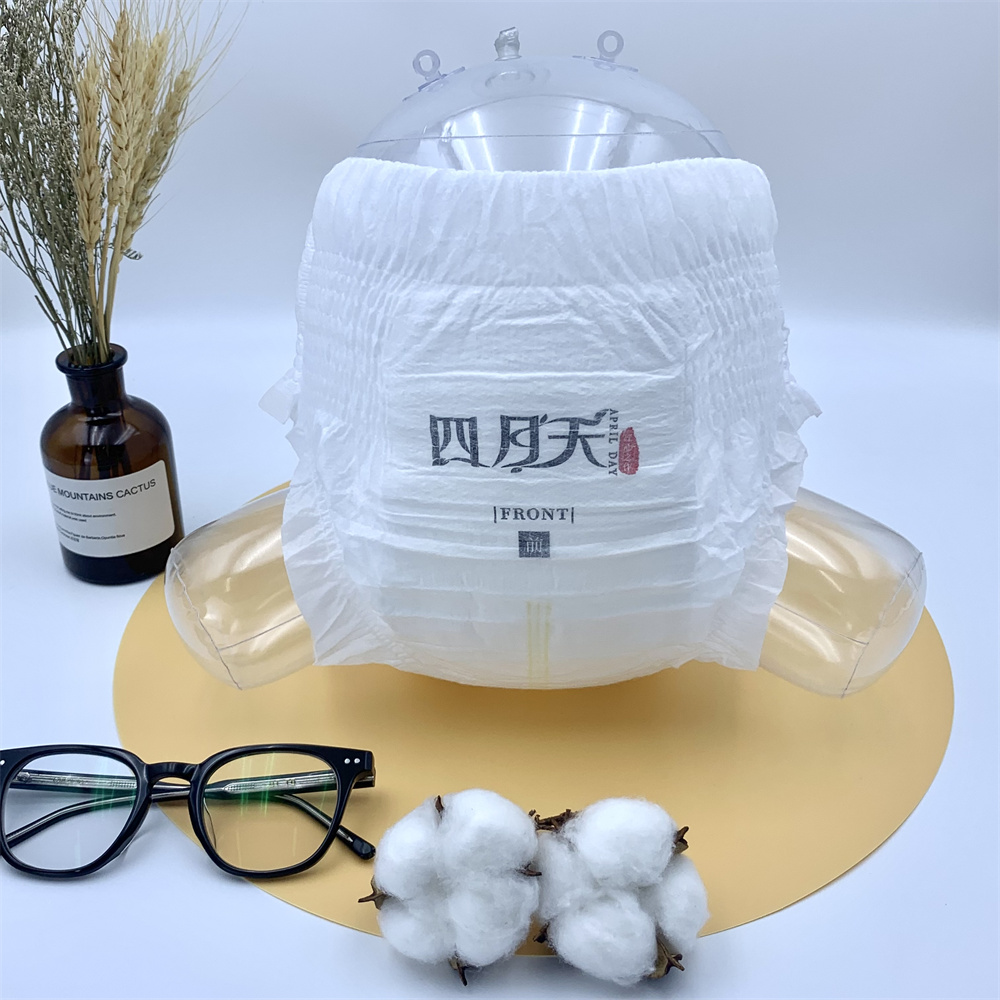Advancements in eco-friendly materials have significantly influenced the design and effectiveness of baby diaper pants, achieving a balance between sustainability and functionality in several ways:
- Biodegradable Components: Integration of biodegradable materials in the diaper pants’ construction reduces their environmental impact. Plant-based fibers, bio-plastics, and compostable materials are used in the core, backsheet, and packaging, ensuring they break down more readily in landfills.
- Reduced Environmental Footprint: Eco-friendly materials aim to minimize the ecological footprint of diaper pants, derived from renewable resources and designed for better biodegradability, thereby reducing their impact on the environment.
- Sustainable Sourcing: Manufacturers prioritize sourcing raw materials sustainably, opting for responsibly managed forests or certified sources, ensuring eco-friendliness throughout the supply chain.
- Chemical Reduction: Eco-friendly materials lead to the reduction or elimination of certain chemicals, fragrances, and dyes that might be harsh or irritating to the infant’s skin, contributing to improved skin health.
- Innovative Absorbent Materials: Development of eco-friendly absorbent materials, such as plant-based polymers or bio-gel technologies, offer competitive absorbency without relying on non-biodegradable materials, ensuring effectiveness while being environmentally friendly.
- Breathability and Comfort: Many eco-friendly materials used in diaper pants are breathable, promoting air circulation and reducing humidity, contributing to enhanced comfort and skin health for infants.
- Recyclability: Efforts are underway to create recyclable components for baby diaper pants, facilitating better separation and recycling of materials, thus reducing waste sent to landfills.
- Consumer Demand and Awareness: Increased consumer demand for environmentally friendly products has driven manufacturers to invest in research and development, resulting in innovative designs that prioritize both sustainability and functionality.
- Regulations and Standards: Growing environmental awareness has led to the implementation of regulations and industry standards that encourage the use of eco-friendly materials, incentivizing manufacturers to adopt more sustainable practices in diaper pants’ design and production.
As a result, advancements in eco-friendly materials have revolutionized the design of baby diaper pants, offering more sustainable options that balance environmental responsibility with functionality, ensuring comfort, effectiveness, and improved ecological impact.
How do baby diaper pants contribute to promoting comfort and maintaining skin health, particularly considering sensitive infant skin and prolonged wear?
Baby diaper pants are designed to prioritize comfort and maintain skin health, especially for sensitive infant skin during prolonged wear.
Here’s how they contribute to promoting comfort and skin health:
- Absorbency and Dryness: Diaper pants efficiently absorb moisture, keeping the baby’s skin dry. They contain absorbent cores that wick away moisture from the skin, minimizing the risk of irritation and discomfort caused by prolonged exposure to wetness.
- Breathable Materials: Many diaper pants are made from breathable materials that allow air circulation, reducing humidity and preventing the build-up of heat, which can contribute to skin irritation.
- Soft and Gentle Fabrics: They are crafted from soft materials that minimize friction against the baby’s delicate skin, reducing the risk of chafing or irritation, especially during movement.
- Stretchable and Flexible: Diaper pants are designed to be stretchable and flexible, providing a comfortable and snug fit without restricting the baby’s movements.
- Elastic Waistbands and Leg Cuffs: The elastic waistbands and leg cuffs offer a secure yet gentle fit, preventing leaks without causing discomfort or leaving marks on the skin.
- Hypoallergenic and Dermatologically Tested: Many brands offer diaper pants made from hypoallergenic and dermatologically tested materials, baby diaper pants reducing the risk of allergic reactions or skin sensitivities.
- Odor Control: Advanced diaper pants have features to manage and reduce odors, providing a more pleasant experience for both the baby and caregivers.
- Wetness Indicators: Some diaper pants have wetness indicators that signal when it’s time for a change, preventing prolonged contact with wetness, which can cause skin irritation.
- Proper Sizing and Fit: Ensuring the right size and fit of the diaper pants is crucial. A proper fit prevents leaks and ensures comfort without being too tight or too loose.
- Regular Changes: Maintaining a routine of regular diaper changes ensures the baby’s skin remains clean and dry, reducing the risk of diaper rash or discomfort.
By providing dryness, softness, breathability, and a secure fit, baby diaper pants aim to keep infants comfortable and maintain skin health, reducing the likelihood of irritations or discomfort associated with prolonged wear, especially for sensitive skin.
